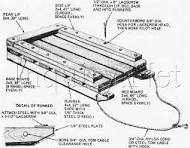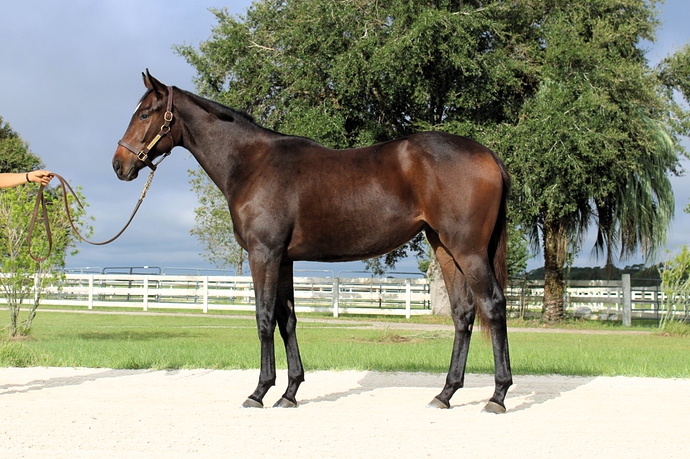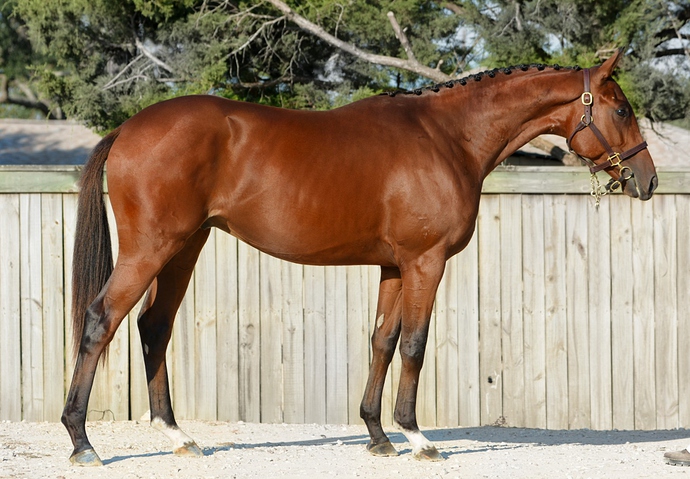I have spent several years prepping TBs for the sales; they have it down to a science. Nutrition, exercise, and handling are all important. I took what I learned from that and applied it to prepping my yearlings for the Future Event Horse classes-- won all the qualifiers, had 2 win champion yearling division (2019, 2021), one top placed filly (2021), and one colt finished 3rd overall (2022). My horses are nice, but having them well-prepped made a noticeable difference compared to other (unprepped) yearlings.
My horses are raised on alfalfa, beet pulp and ration balancer, I don’t overfeed or overgrow them. 60 days out from the show or sale, I start prep: stalled during the day to prevent sunbleaching, and walking 30 minutes 5 days per week. Farms with a Eurowalker machine will use that, alternating with handwalking every other day. HANDWALKING IS IMPORTANT! “Machined” horses who never handwalk don’t lead as well and aren’t as attentive to their handlers. I don’t have a walker, so I handwalk or pony them off a good horse. After 2 weeks of walking, work up to jogging on the pony or walker, start with 5 minutes a day, work up to 10-15 depending on horse’s weight and condition. This exercise program isn’t strenuous, but yearlings develop muscle pretty well with just brisk walking. Use a field with a hill if you can. TB sales yearlings will show in a chiffney bit, so we walk in that at home so they are used to it. I used a chiffney with my FEH yearlings too, it’s an easy way to prepare them for a bit later in life.
Some yearling prep programs will lunge or roundpen their horses in sidereins, if the horse has an upside down neck or lacks topline. I really prefer to avoid that, as I don’t like circle stress on young joints and I don’t like tying horses’ heads down as a rule. (Loose sidereins on a horse of riding age is fine, tight straps on a baby is not).
My old boss, a top TB consignor who prepped millions$$$ of yearlings, taught me that you “feed the topline, work the belly.” Meaning, if you have a horse with a weak topline, you won’t fix it simply with exercise, you feed them more protein to grow muscle. If you have a yearling with a big belly, you jog them more to work it off. He didn’t want the yearlings fat, but he would increase their alfalfa hay and 16% protein grain on the harder keepers that lacked topline, even if they had a “belly” they got more food…they just walked a longer or jogged a little faster. That program also fed flax, MSM, Lubrisyn, and Relyne.
Horses are groomed daily, bathed enough to learn to stand well and get any sweat off.
After 60-90 days the yearlings look like strong, fit athletes.




